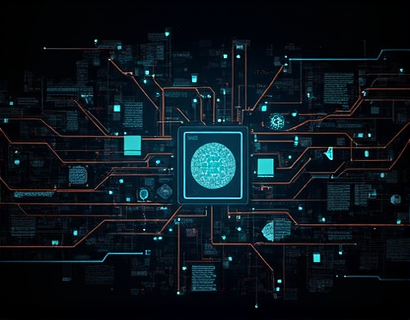AI-Driven Mental Health Insights: Empowering Professionals, Students, and Enthusiasts
The integration of artificial intelligence in mental health services has opened new avenues for providing specialized insights and support to a diverse audience. An AI-powered chatbot designed for professionals, students, and mental health enthusiasts offers a unique platform to explore and understand mental health services and industry trends. This chatbot ensures the delivery of accurate and safe content, tailored to meet the needs of various user groups, including children, students, educators, and healthcare professionals, all within a secure and engaging environment.
Understanding the Need for AI in Mental Health
The mental health landscape is complex and ever-evolving, with a growing demand for accessible and reliable information. Traditional methods of disseminating mental health knowledge often fall short in providing personalized and timely insights. AI-driven solutions address these gaps by offering real-time, data-driven information that can adapt to the user's specific needs and context. For professionals, this means staying updated with the latest research and trends, while for students and enthusiasts, it provides a foundational understanding of mental health concepts and resources.
Features of an AI-Powered Mental Health Chatbot
An AI-powered chatbot for mental health is equipped with several key features to ensure it serves its diverse user base effectively:
- Content Verification: The chatbot is designed to cross-reference information from credible sources, ensuring that the content provided is accurate and up-to-date. This is crucial for maintaining trust and reliability, especially when dealing with sensitive topics like mental health.
- User Segmentation: The chatbot can identify the user's role—whether they are a professional, student, or enthusiast—and tailor the responses accordingly. This personalized approach enhances the user experience and ensures that the information is relevant and actionable.
- Child-Friendly Interface: For younger users, the chatbot includes a simplified interface with age-appropriate language and content. This ensures that children and students can access mental health information safely and understandably.
- Interactive Learning: The chatbot can engage users in interactive conversations, providing quizzes, assessments, and guided learning paths. This interactive element helps users better grasp complex concepts and retain information.
- Resource Directory: The chatbot maintains a comprehensive directory of mental health resources, including therapist directories, support groups, and educational materials. Users can easily find and access these resources based on their location and specific needs.
Supporting Professionals in Mental Health
For healthcare professionals, the chatbot serves as a valuable tool for staying informed about industry trends, best practices, and new research. Key features include:
Continuing Education: Professionals can access summaries of recent studies, articles, and conferences, helping them maintain their knowledge and credentials. The chatbot can also recommend specific resources based on the professional's area of expertise or interests.
Case Management: The chatbot can assist in managing patient cases by providing structured templates and checklists, ensuring that professionals have all the necessary information at their fingertips. This can include treatment plans, progress notes, and follow-up reminders.
Peer Support: A secure forum within the chatbot allows professionals to connect with peers, share experiences, and seek advice. This community aspect fosters collaboration and support, which are essential for mental health professionals.
Educational Resources for Students and Enthusiasts
For students and mental health enthusiasts, the chatbot offers a wealth of educational resources to build a solid foundation in mental health:
Foundational Knowledge: The chatbot provides introductory content on mental health topics, including definitions, common disorders, and general principles of mental health care. This helps users understand the basics and identify areas for further exploration.
Interactive Learning Modules: The chatbot can guide users through interactive modules that cover various aspects of mental health, such as stress management, coping strategies, and the importance of mental wellness. These modules can include videos, quizzes, and reading materials.
Research Insights: Students can access summaries of recent research papers and studies, with explanations of key findings and their implications. The chatbot can also suggest relevant academic resources and encourage further reading.
Ensuring Safety and Privacy
Safety and privacy are paramount in mental health discussions. The chatbot is designed with several measures to protect user data and ensure a secure environment:
Data Encryption: All user data is encrypted both in transit and at rest, ensuring that sensitive information is protected from unauthorized access.
Anonymity Options: Users can choose to interact anonymously, providing a safe space for those who may be hesitant to disclose their identity.
Parental Controls: For child users, parents can set up controls to monitor and limit the types of interactions and information accessed, ensuring a safe and appropriate experience.
Crisis Intervention: The chatbot includes protocols for handling crisis situations, connecting users with immediate support services and providing resources for emergency assistance.
Engaging and Interactive Design
To keep users engaged and motivated, the chatbot incorporates several design elements:
Conversational Tone: The chatbot uses a friendly and approachable tone, making users feel comfortable and supported throughout their interactions.
Visual Elements: The interface includes images, infographics, and videos to break up text and make the content more engaging. These visual aids help illustrate complex concepts and keep users interested.
Gamification: Elements of gamification, such as badges and rewards, can be used to motivate users to explore more content and complete learning modules. This approach can be particularly effective for younger users.
Building a Community of Support
The chatbot fosters a sense of community by connecting users with similar interests and experiences:
Discussion Forums: Secure forums allow users to discuss mental health topics, share personal stories, and offer support to one another. Moderators ensure that the discussions remain respectful and helpful.
Group Sessions: The chatbot can facilitate virtual group sessions led by professionals, covering topics like mindfulness, therapy techniques, and coping strategies. These sessions provide a platform for collective learning and support.
User Testimonials: Sharing success stories and testimonials from users can inspire others and demonstrate the positive impact of the chatbot. This also helps build a community where users feel valued and supported.
Conclusion
The integration of AI in mental health services through a specialized chatbot represents a significant step forward in providing accessible, accurate, and safe information to a wide range of users. By supporting professionals, students, and enthusiasts, this chatbot not only enhances individual knowledge but also contributes to a broader understanding and improvement of mental health services. As technology continues to evolve, the potential for AI to make a positive impact in mental health is vast, offering hope and support to those in need.










































